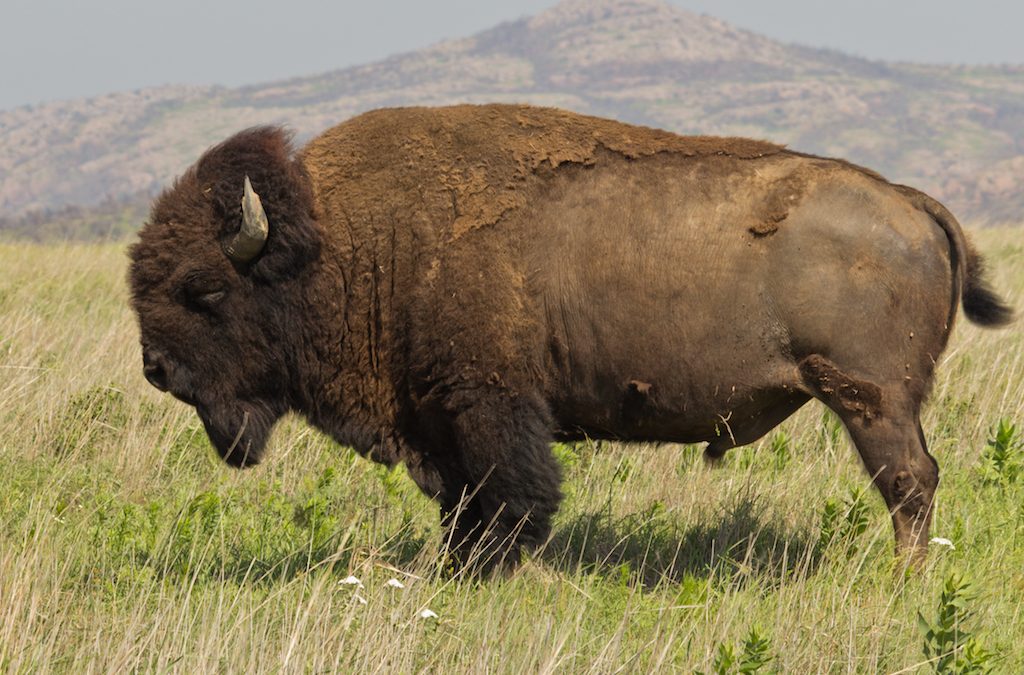If you missed the news, a few days ago President Barak Obama signed the National Bison Legacy Act (Pub. L. 114-152) that names the “North American Bison” the national mammal. The bison does not replace the Bald Eagle as the national animal or the national emblem.
The bison is an iconic animal unique to North America. Discovered by the European settlers as the country expanded west, the bison was significant to the economic and spiritual lives of the native tribes throughout the Great Plains areas.
Bison is important to the ecology of the landscapes where they are located. Bison eat a certain type of grasses that are said to be difficult to control. The bison act as a natural “ predator” and not only consumes these grasses but also helps maintain control over the vegetation through consumption and feeding what is left through their waste.Although conservation efforts began in the late 19th century, a bison population that used to number in the millions the 2012 Department of Agriculture census said that there were 162,110 heads. Up until the last 50 years, we have done a bad job of taking care of this national resource, now national treasure.
When numismatist thinks of the American Bison, the thought turns to the Indian Head “ Buffalo” Nickel designed by James Earle Fraser. Fraser, a student of Augustus Saint-Gaudens, continued the path of Theodore Roosevelt’s “pet crime” to design a coin that screams America.
The reverse of the coin is an American Bison that we erroneous call a buffalo. According to legend, Black Diamond was Fraser’s model for the reverse of the Buffalo nickel. Black Diamond was a North American bison that was living in the Central Park Zoo. He was donated to the zoo by Barnum and Bailey and lived his life there until he was auctioned in 1915 to a game and poultry dealer who was later sold as steaks for $2 a pound.
When asked about the model for the coin, Fraser said it was Black Diamond and found him in the Bronx Zoo. At one time Fraser was not sure of the name of the animal but insisted his influence was at the Bronx Zoo. Black Diamond was never at the Bronx Zoo. But like the story of who was the model for the Indian on the obverse, why should facts spoil a good story!
With the signing of the National Bison Legacy Act there are groups that wants to bring back the Buffalo nickel. Someone started a petition at the online petition website Change.org to convince the U.S. Mint to return to bring back the buffalo nickel.
Even though the U.S. Mint is the wrong agency to address this petition to since it would require an act of congress, the Fraser Buffalo design is still used on the 24-karat gold bullion coin. In fact, not counting varieties, mintmarks and strike types, the bison has appeared on eight different coins and one Legal Tender Note. If you want to put together a nice type set, it would require 22 different coins and the 1901 $10 Legal Tender Note (see “Collecting a Herd of Buffaloes” for this discussion).
I do not know if returning the Buffalo nickel is a good idea. While it was an iconic design, it was one that saw considerable wearing while in circulation. If someone wants to bring the buffalo back to United States coins, maybe we could consider the 2005 Westward Journey nickel with the American Bison reverse. It also has a better portrait of Thomas Jefferson than is currently used.
If you would like to virtually sign the partition, visit Change.org and register your vote.
The Washington Post produced an interesting video with facts about the bison. If you want to see the video without visiting the Post’s website, you can watch it here:





